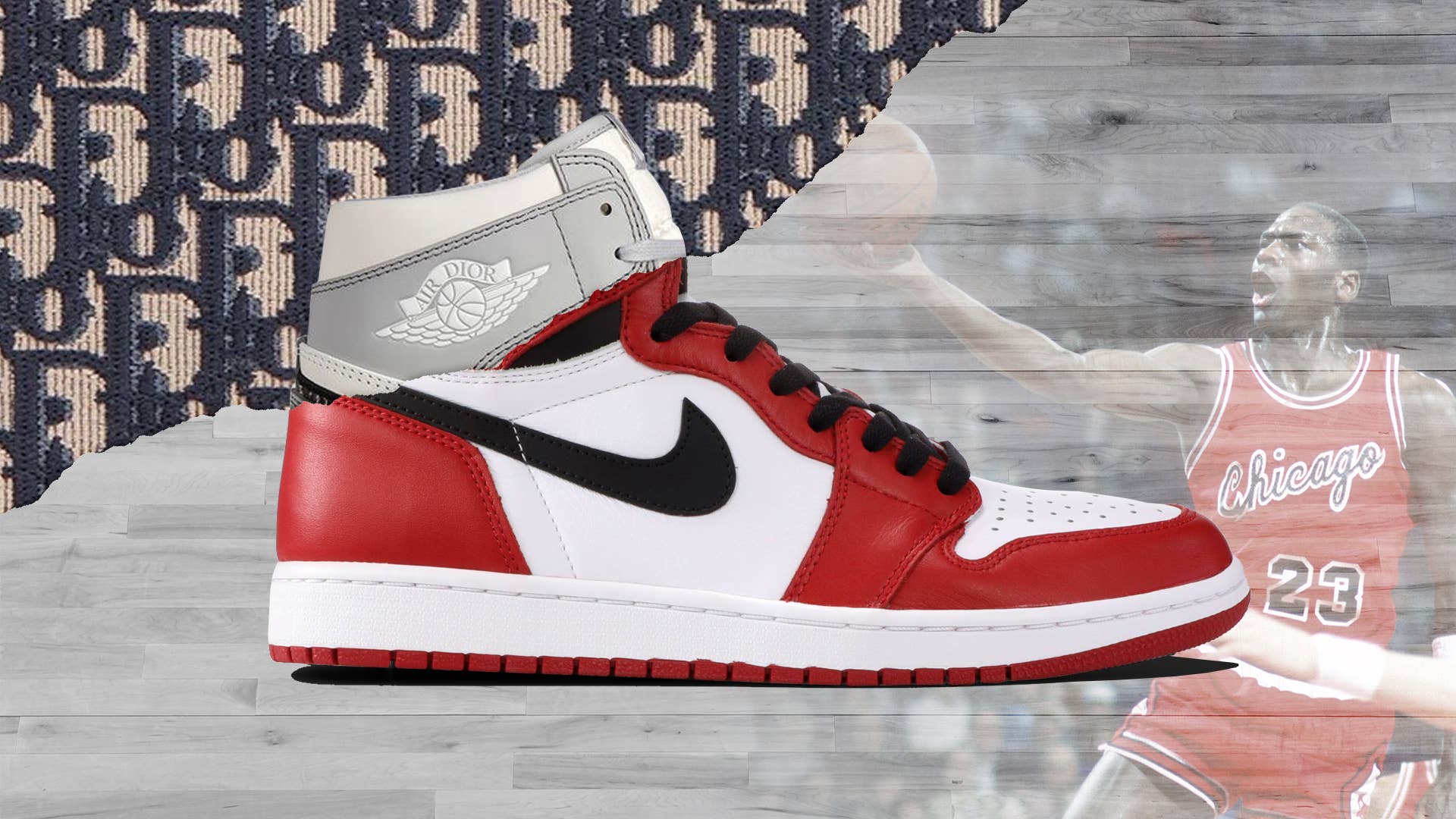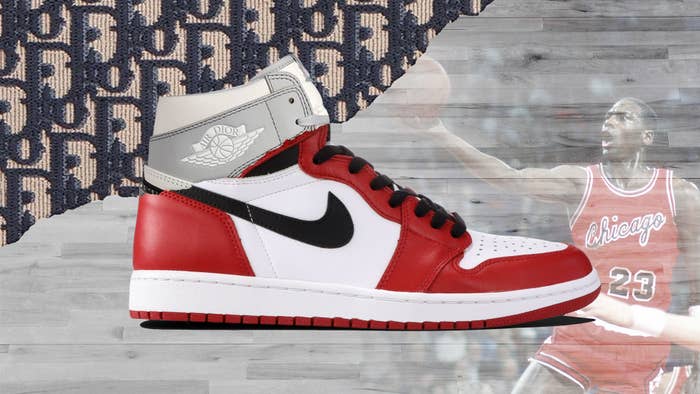
The relationship between the high fashion and sneaker industries has always been complicated at best. Sneakers, for the longest time, were viewed as too low brow by those who labeled themselves as fashion connoisseurs. And sneaker nerds could care less about buying a shoe that’s an $800 knockoff of a Nike Air Force 1 or Adidas Stan Smith, or a gaudy high-top that’s made in a coastal European country and adorned with spikes or glitter—or both. There are times when high fashion has gotten it right: The Gucci Tennis ‘84, the Raf Simons x Adidas Stan Smith, or the Comme des Garcons x Nike Air 180. The worlds are headed for a collision course at a pace that we’ve never seen before. The two biggest brands are working with two of the biggest, and most prestigious, fashion houses: Adidas with Prada and Dior with Jordan. With names that large, it not only caught people off guard, but it also made people wonder, “What the hell is going on?” and, plainly, “Is this good or bad?” Let’s get into it.
There’s always been somewhat of a fascination with high-end sneakers within hip-hop. The aforementioned Gucci Tennis ‘84 was a legit drug dealer’s sneaker and an aspirational item over 30 years ago. Slick Rick rapped about Bally shoes. Sneakers such as the New Balance 990, the first model to cost $100, became a fixture with hustlers because of its price point. The same can be said Nike Air Max, Foamposites, Air Jordans, Adidas Top Tens, and the list goes on and on. Having expensive sneakers became a symbol of status. Not everyone can afford a Rolex, Italian sports car, or mansion in the suburbs. But save up a little bit of money and you could own sneakers that said something about you. That you knew what was up, but also had a bit of expendable income.
All of the previously mentioned sneakers gained credibility not only in the sporting arena, but also by the people who wore them in the streets. High-fashion brands would also go on to make their own luxury sneakers, including Prada, whose Americas Cup sneaker—some complete with patent-leather uppers—was a favorite in the early 2000s by those who were looking less at the runway and more at the corners for their style inspiration.
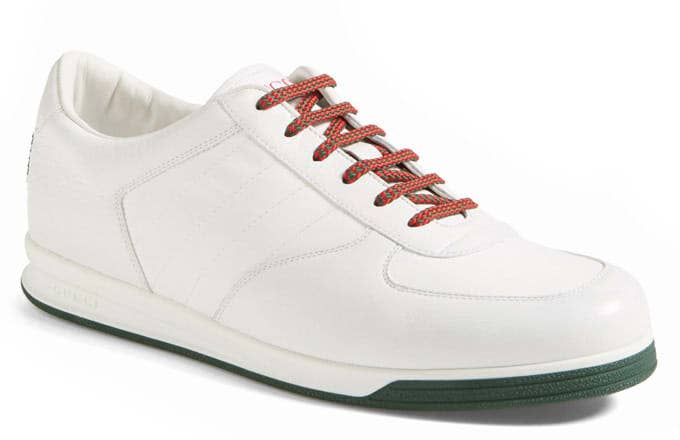
Then the high-fashion industry hit an era of sneakers that are better off forgotten. Thin-soled Gucci sneakers covered in the brand’s monogram print and the like dominated the early to mid-2000s. At the same time, sneaker culture was riffing off the high-fashion industry. Supreme’s Nike Blazer’s took inspiration from Gucci and had a quilted upper, reminiscent of designer bags, and a reptile Swoosh. Diamond Supply Co. fashioned its Nike SB Dunk after Tiffany and Co. Nike did $1,000 alligator and anaconda Air Force 1s that were handmade in Italy. Later on Don C would recreate the Air Jordan II in a way that resembled his wife’s Chanel bag. Sneakerheads who couldn’t afford legit high-fashion clothes were instead buying coin pouches and belts from Louis Vuitton and Gucci. Kanye West would call himself the Louis Vuitton Don. Lupe Fiasco rapped about Goyard trunks. Hip-hop and sneaker culture had a clear obsession with high-fashion, which had been seen since the ‘80s when artists like Eric B. and Rakim would get custom-made Gucci wares from Harlem tailor Dapper Dan.
With all the goodwill that sneaker culture had sent to high-fashion, or fashion in general, it wasn’t always reciprocated. Sneakerheads, and streetwear in general (but mainly sneakerheads) were immature. They wore cargo shorts, high socks, and bright sneakers. They matched their hats to their shoes, and maybe their shirt. They preferred bulky basketball shoes over simple, streamlined silhouettes. They were unsophisticated—not purveyors of fine garments, and didn’t know the difference between and Oxford and spread collar shirt. Sneakers were for sneakerheads. Until they suddenly weren’t anymore.
Nike models like the Flyknit Racer and Roshe Run began to catch on with fashion folks. They also “discovered” the Air Force 1. It was then-Givenchy Creative Director Riccardo Tisci’s favorite shoe. Nike eventually gave him collaborations on the sneaker, which debuted in 1982. Some were OK, some were awful. Brands such as Common Projects were producing Italian-made, back-to-basics sneakers that would have been worn by Steve McQueen, at least that’s what blogs probably would have said, if he was still alive today. Menswear blogs, such as our own Four Pins, went from covering hardbottom shoes and boots to the latest sneaker drops. They latched onto the the Y-3 Qasa Racer and Air Jordan 1. Anything that came in all-white or all-black was “fire.”
Sneaker people found the fashion world’s obsession with sneakers as weird, or rather all-of-a-sudden. What came from it was a mentality of “we’re elevating sneaker culture”—as if sneaker culture was a downtrodden existence that those involved in couldn’t seem to help pull themselves out from. It all seemed corny to me and some high-falutin bullshit. It felt as if nearly every middling fashion designer, and even some good ones, were given a sneaker collaboration. It mostly resulted in boring sneakers by people who really didn’t like the things to begin with.
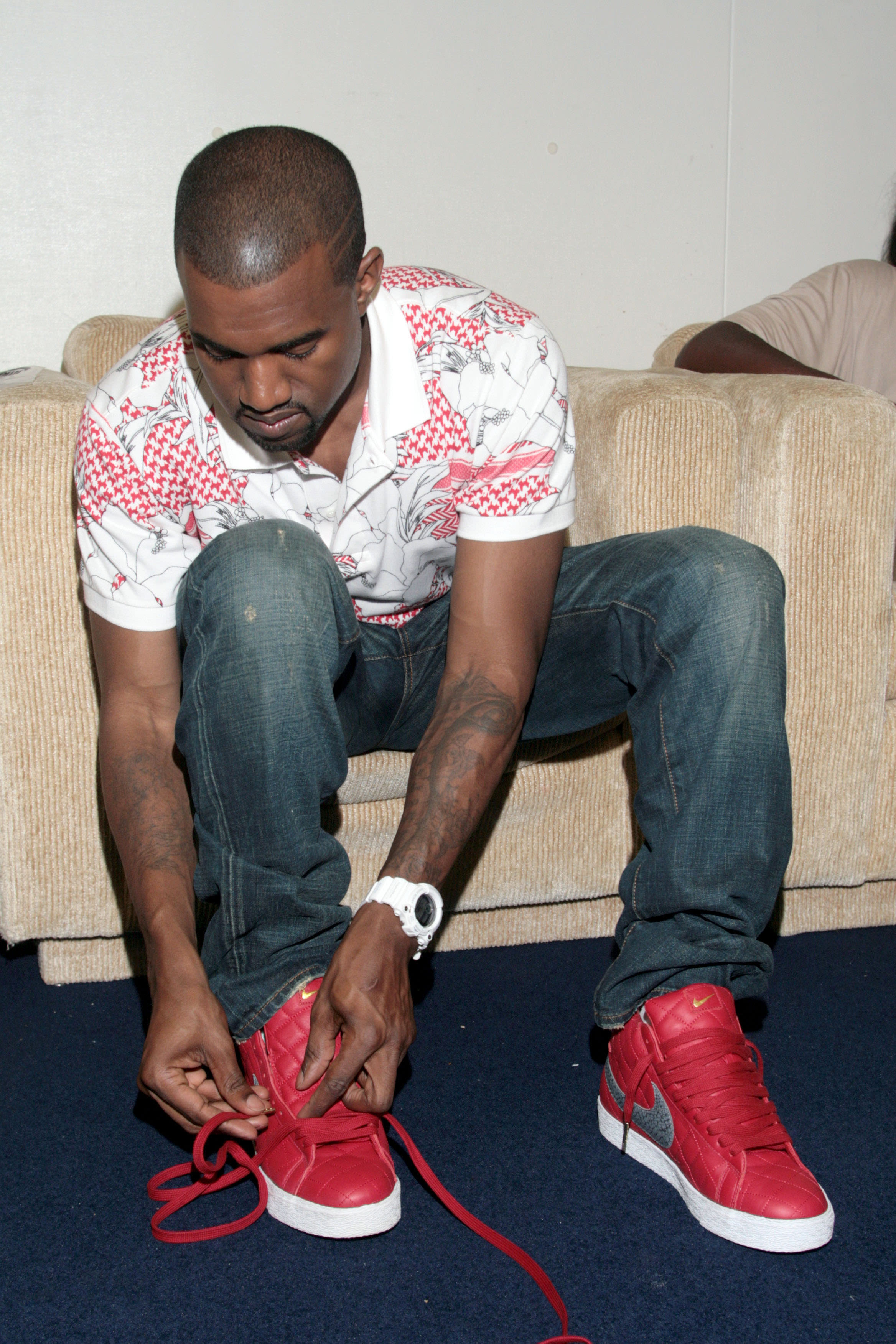
Then all of that came to pass, praise the lord. Celine made $1,000 Air Force 1s, seemingly every brand tried to remake the Stan Smith, and they all were charging more for a sneaker they only made worse. I’m glad it ended.
But then things changed. Fashion brands actually went around to trying to impact the sneaker world, rather than cash in on a trend. Balenciaga, for better or worse, became the go-to high-fashion sneaker brand. The brand’s Triple S sneaker, complete with its three soles and $900 price tag, was a Rorschach test for consumers. Gucci’s recent revival also saw a boost in the label’s sneaker department. Dior also saw success with a printed high-top shoe and a high-end runner.
Dior’s recent foray into the sneaker category isn’t surprising at all. The label’s creative director, Kim Jones, who was appointed in 2018 after leaving Louis Vuitton, has been a strong proponent of streetwear. He’s had several Nike collaborations in the past (some good, some awful). He’s even designed a football boot (he is British after all). Dior’s also recently collaborated with Kaws, an artist who also had his own Air Jordan collaboration. And the brand has a Stussy collaboration on the way. The Dior x Air Jordan 1, which is expected to retail at $2,000 and be limited to 1,000 pairs, is exactly what people expected from the partnership. There were even mockups going around the past few weeks that looked remotely similar to the final product. The white-and-grey Air Jordan 1 high, with its Dior print on the Swoosh, Air Dior on the tongue and Jordan Wings logo, and the logo on the sole, is all what you’d imagine the shoe to be. You can’t be mad at that. It wouldn’t make sense for Dior to come in and design a high concept sneaker, a la the Comme des Garcons Air Jordan 1, and expect the shoe to have the same brand equity. It also doesn’t mean that it’s good. It’s a sneaker for assholes. Something for the uber rich, or those who want to present themselves as such—to flaunt their wealth and connections. It’s a sneaker made for Instagram, Fashion Weeks, and the NBA Tunnel. It’s not something the average sneaker fanatic will ever touch. But that’s the direction that the sneaker world is headed. All the shoes that anyone thinks are worth talking about resell for over $1,000. If they don’t, they’re nobodies. In this case, Jordan just made it more obvious that this is where the sneaker world is headed.
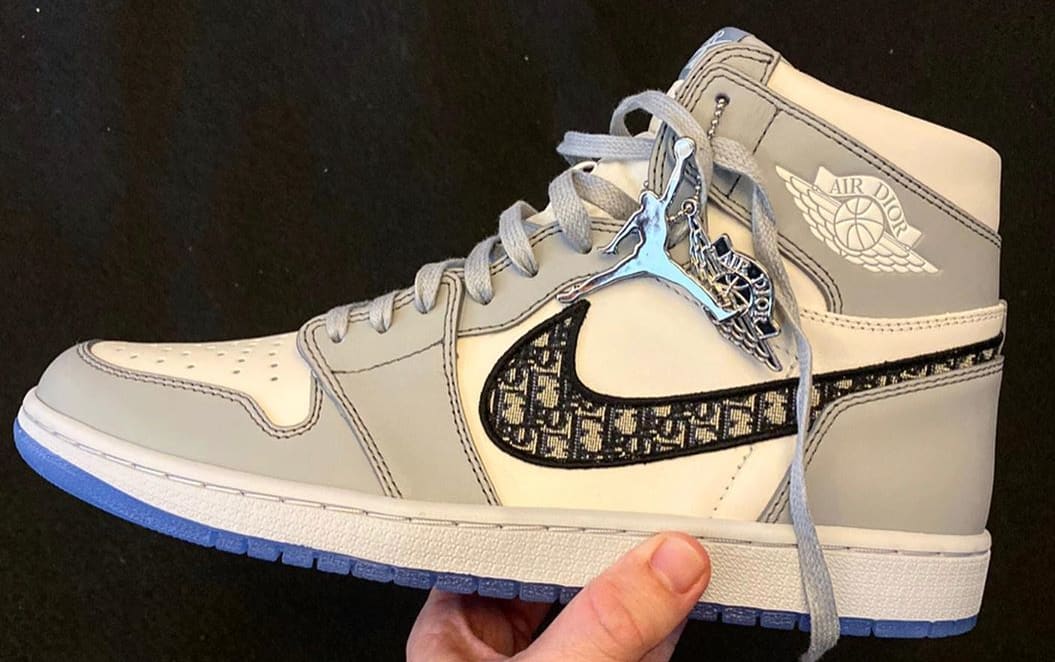
It’s no shock when you see Virgil Abloh, whose collaborative Nike and Jordan sneakers resell in the thousands, is now at Louis Vuitton and making $1,000 sneakers that are inspired by 1980s basketball models.
Supreme’s remaking Made in Italy versions of Nike Air Max 95s and selling them for $500 a pop. This is the new norm in sneakers, not a blip on the screen. The Supreme x Louis Vuitton collection paved the way for a lot of this.
We could go into the Prada x Adidas Superstar and bag (which will retail for over $3,000 as a set), but we don’t need to. They’re nothing noteworthy. It’s an all-white sneaker with a designer label slapped on the heel and made from fancy leather in Italy—something you’d expect to buy while on vacation in Eastern Europe or see posted on a Gopnik meme account. You’ll see pairs in SoHo, that’s for sure.
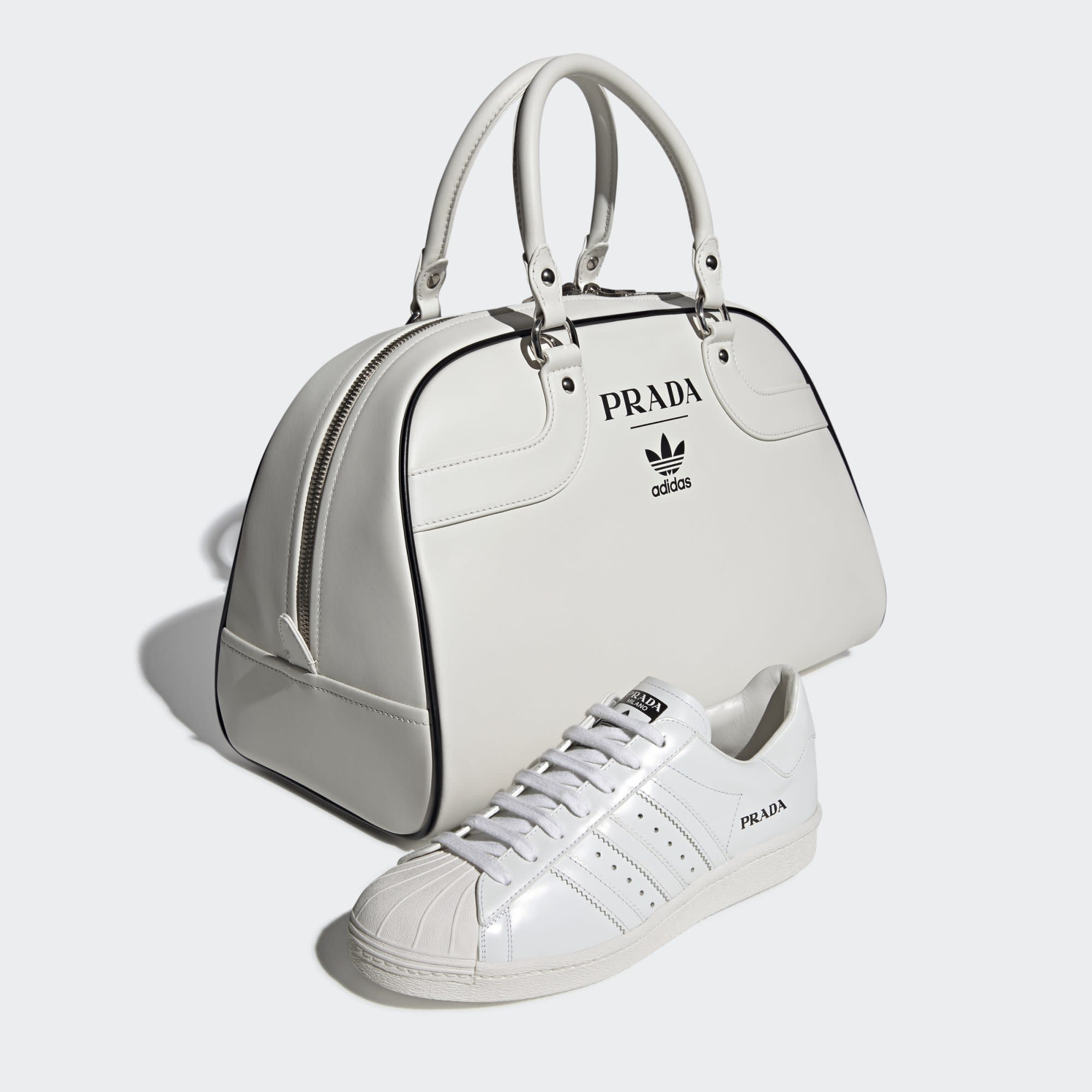
The Dior x Air Jordan 1, which releases in April 2020, will end up being a top five sneaker next year. It’ll be near the top of the best collaborations list and worn by LeBron James before a game. It’ll be posted by Instagram accounts that pair hype sneakers with head to toe Supreme. It’s going to be impossible to ignore.
What you should be paying attention to, though, is Jordan Brand re-releasing the Air Ship, the shoe the NBA actually banned during Michael Jordan’s rookie year. Oddly enough, it was announced by Hiroshi Fujiwara, a man who can be pinpointed with bringing high taste into the sneaker world through his Fragment label and HTM projects.
It’s a sign that Jordan Brand hasn’t lost touch with its fanbase. That sneaker brands aren’t just chasing clout and potential resale values. As for high fashion and the footwear industry? It’s going to be an ebb-and-flow relationship. It shows no signs of slowing down, but it will decrease over the years, like everything eventually does in life. Just separate the good from the bad and enjoy the ride.

